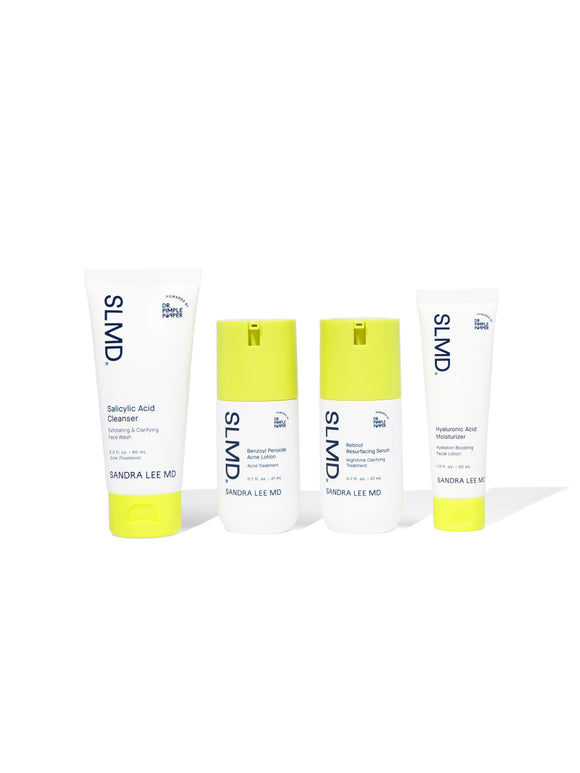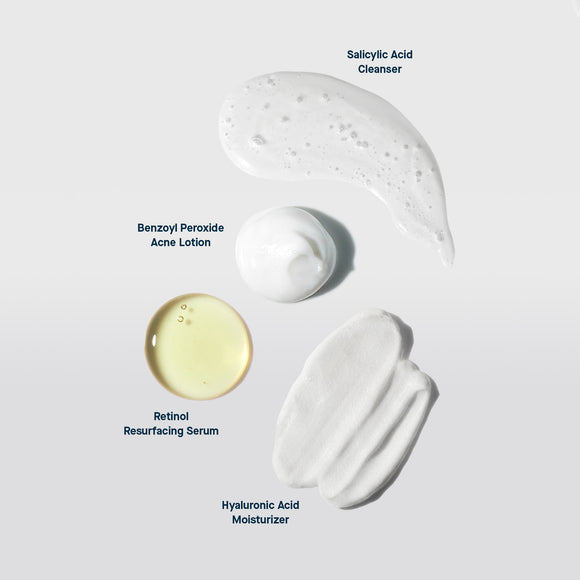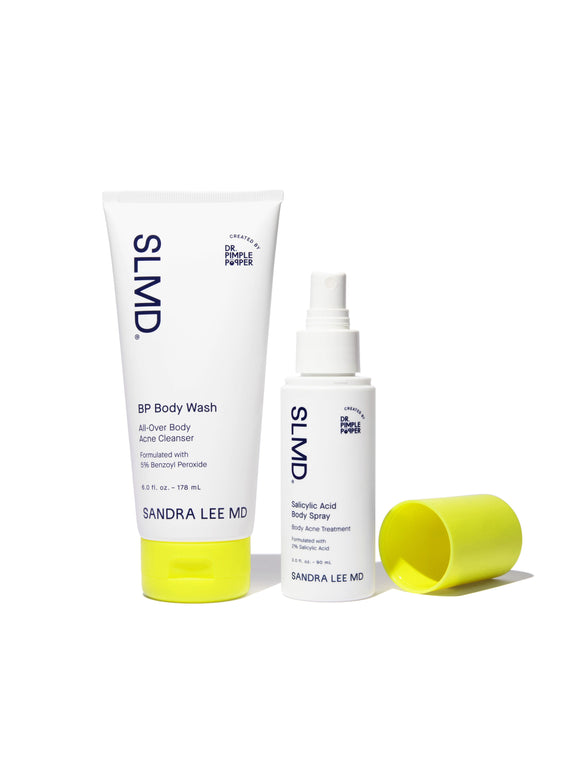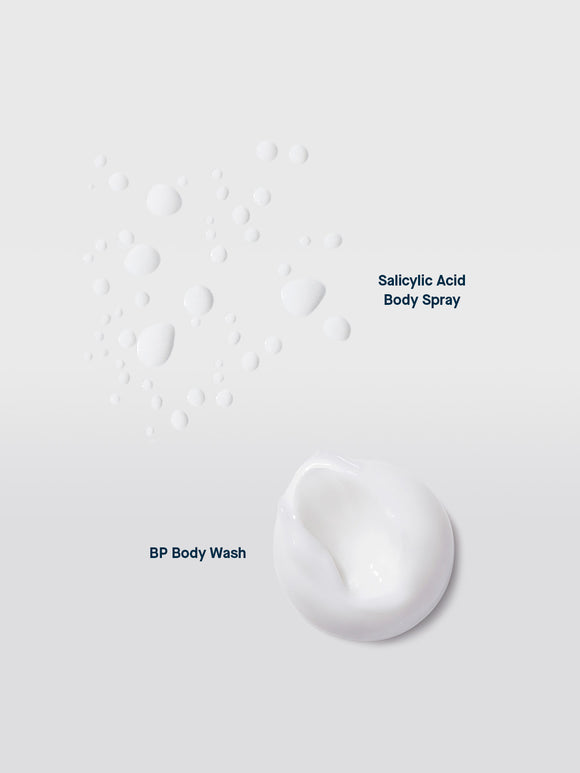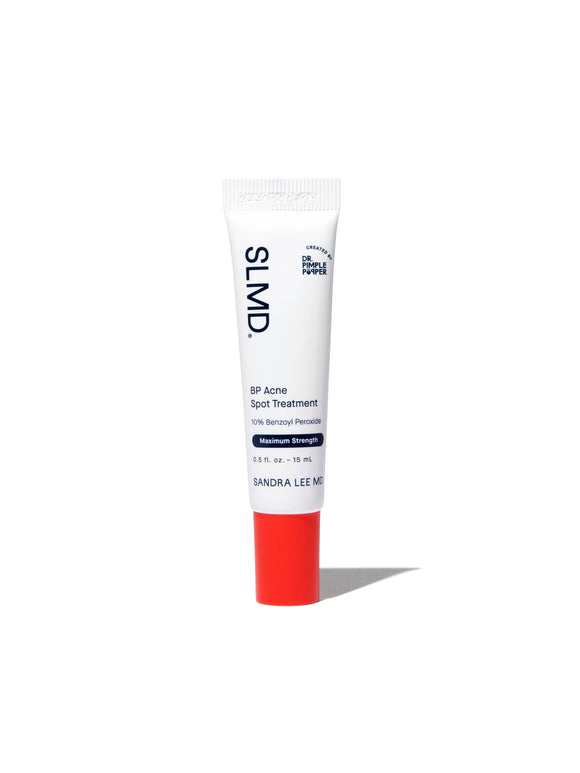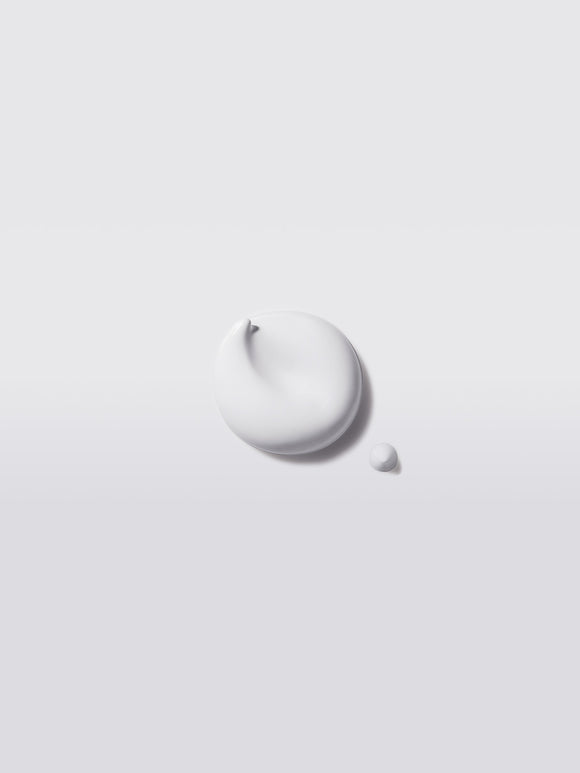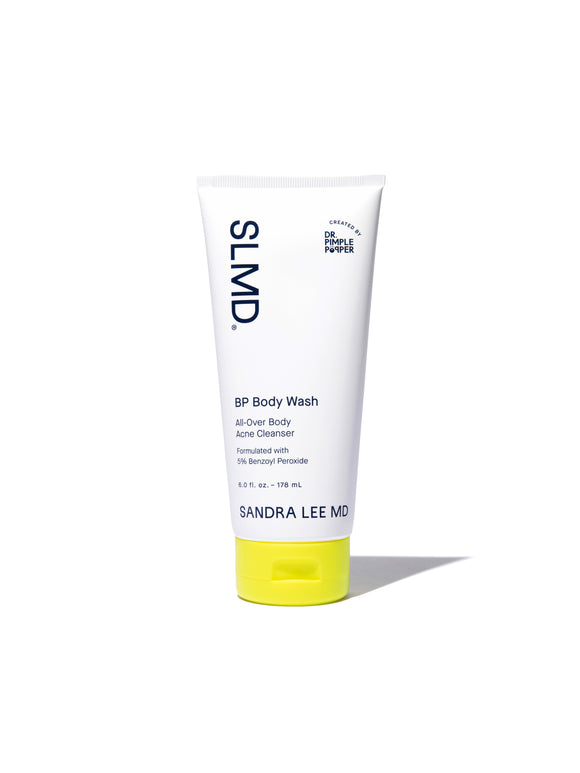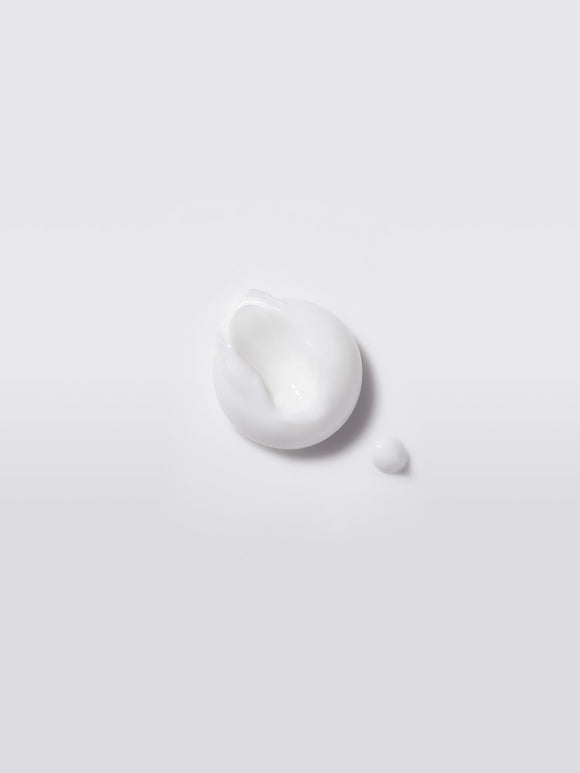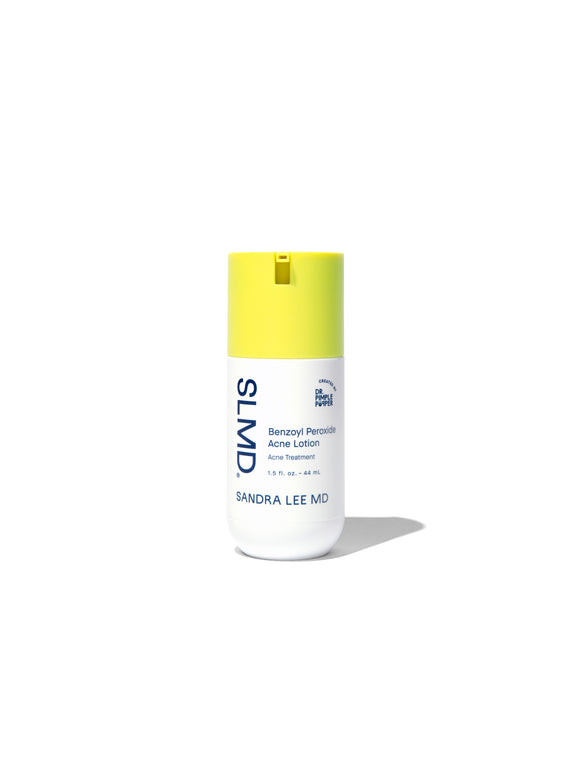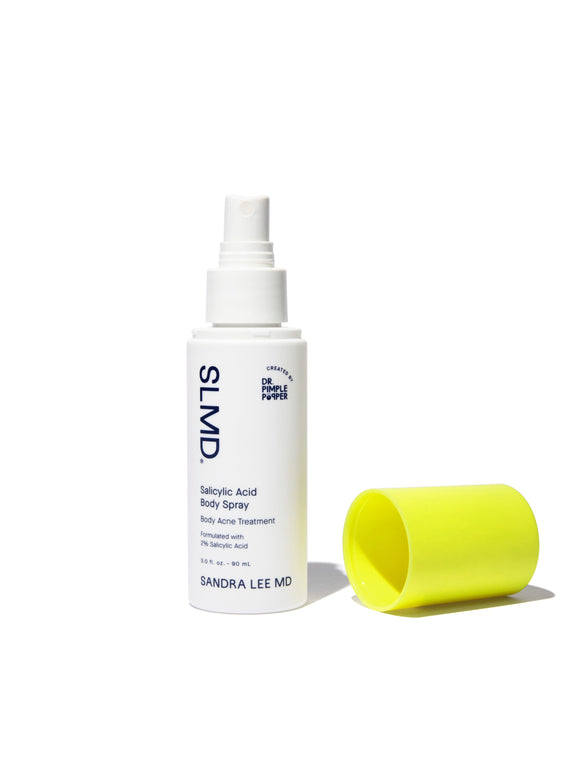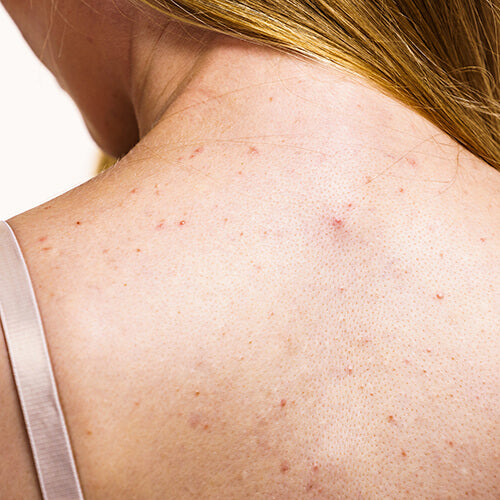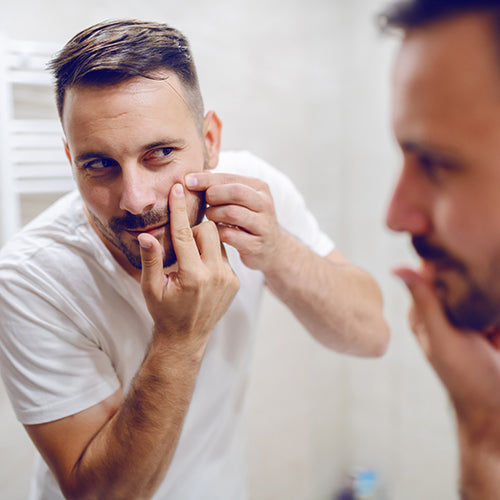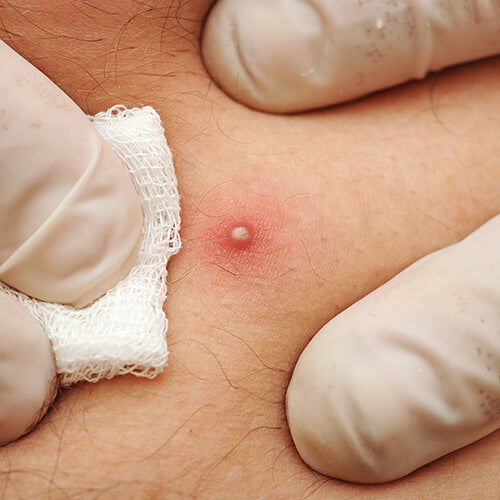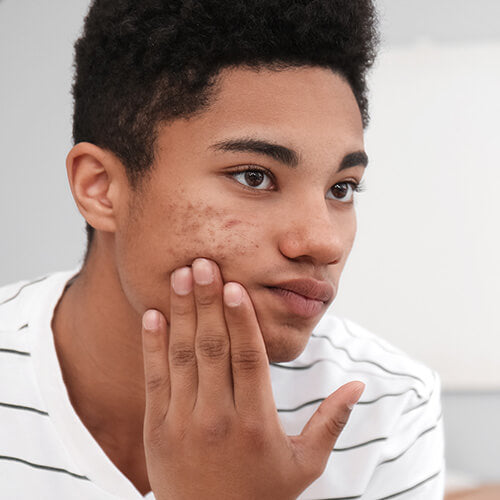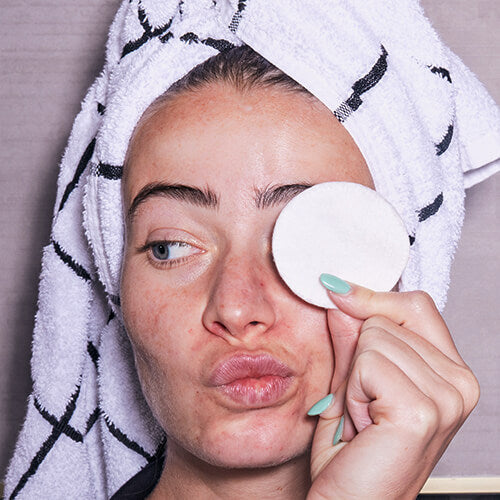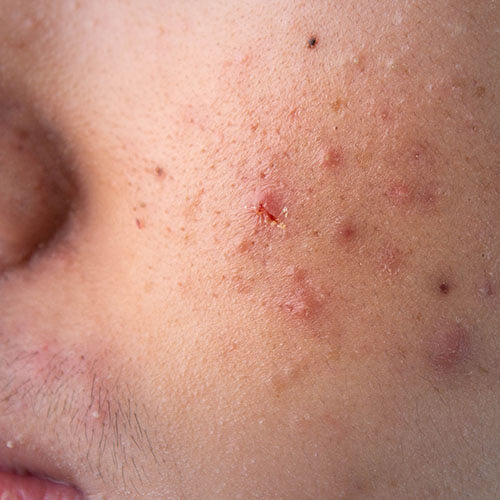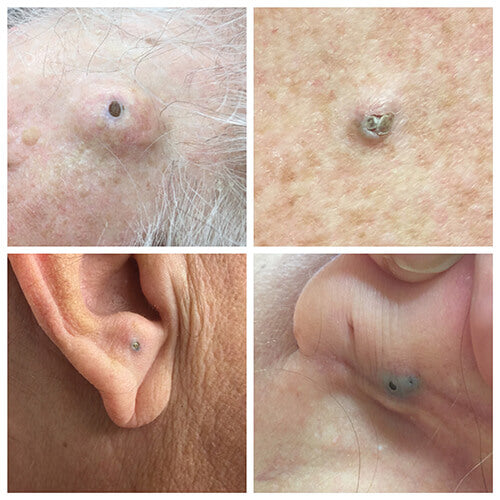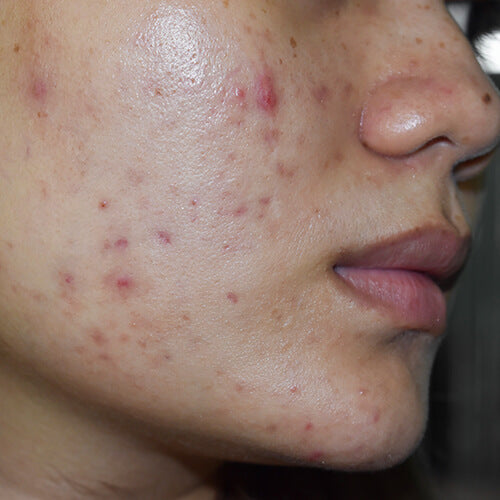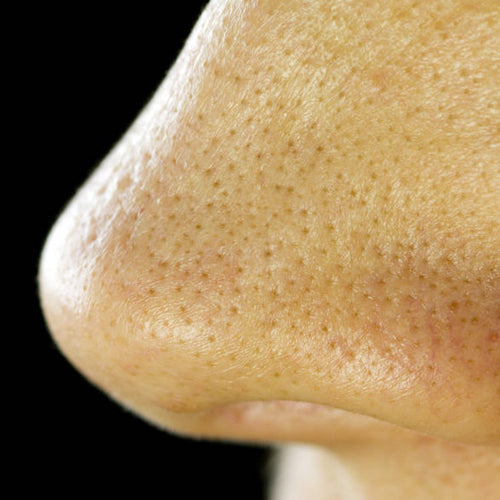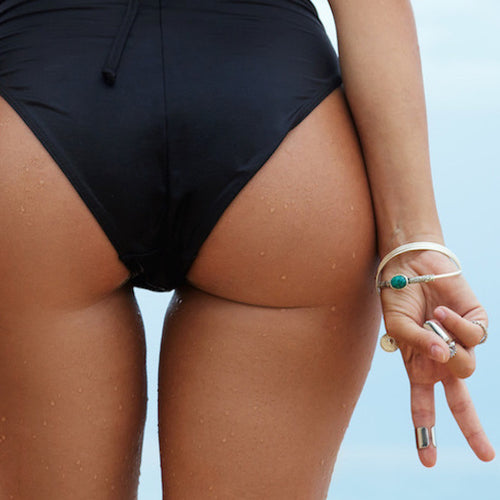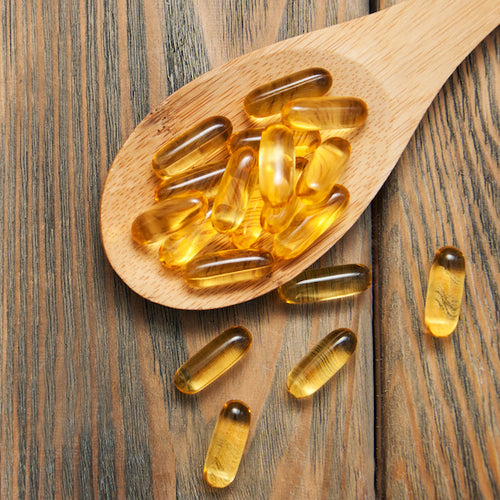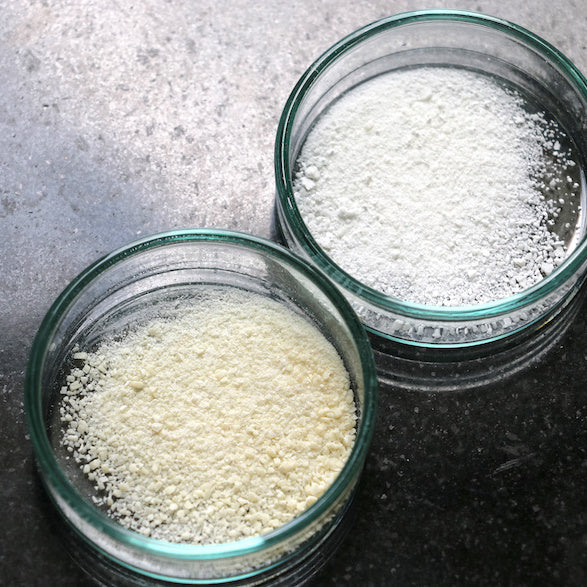
Ingredient Spotlight: Benzoyl Peroxide
Benzoyl peroxide is one of the most effective ingredients dermatologists use to treat inflammatory acne. Besides acne, benzoyl peroxide can treat a variety of different skin conditions. So what makes it such a powerful active? Here, we delve into the details, including a fun bit of chemistry — promise! — so you can decide whether BP is right for you.
Published:
2 minute read
Benzoyl peroxide is one of the most effective ingredients dermatologists use to treat inflammatory acne. First used over one hundred years ago, you can find this OG pimple fighter in washes, lotions, creams, and concentrated spot treatments.
Besides acne, benzoyl peroxide can treat a variety of different skin conditions. So what makes it such a powerful active? Here, we delve into the details, including a fun bit of chemistry — promise! — so you can decide whether BP is right for you.
Article Quick Links
What is benzoyl peroxide?
Though it was first synthesized in a lab in the 1800s, the medical benefits of benzoyl peroxide weren’t discovered until about the mid-20th century. Historically, the antiseptic and anti-inflammatory compound has been used in a variety of ways, including as:
- A bleaching agent
- Hair dye
- Teeth whitener
- Burn and wound treatment
How does benzoyl peroxide work?
Dermatologists have been using benzoyl peroxide as an acne treatment for close to a century. It’s an especially effective antiseptic, which means it kills germs like a boss. Here’s how it works:
When BP penetrates into the skin, it’s converted into benzoic acid — which is in turn broken down, releasing free radical oxygen species. All you skincare nerds will recall that free radicals are bad news for proteins. But in this case, that’s a good thing: all this chemical action destroys the acne-causing bacteria, too.
Besides killing bacteria, benzoyl peroxide also has mild keratolytic effects, which helps exfoliate pore-clogging dead skin cells. Plus, it calms inflammation and slightly reduces sebum (oil) production.
One of the reasons dermatologists love BP is that, unlike antibiotics, this acne fighter doesn’t create bacterial resistance. No matter how often it’s used, C. acnes bacteria can’t become “immune” to the effects of benzoyl peroxide.
Created by Sandra Lee, MD (aka Dr. Pimple Popper) SLMD Skincare features benzoyl peroxide products to treat both face and body acne.Benzoyl Peroxide Acne Lotion: helps control inflammatory pimples, part of the 3-step Acne System
BP Spot Treatment: a maximum-strength targeted solution for inflammatory pimples
BP Body Wash: part of the Body Acne System, helps control and calm body breakouts

What skin conditions does benzoyl peroxide treat?
Benzoyl peroxide is an FDA regulated drug available both over-the-counter and by prescription to treat acne vulgaris. It’s also used by physicians to treat a variety of skin conditions “off label” — aka without express permission from the FDA but with some established efficacy. Its most common uses include:
- Acne (particularly inflammatory acne)
- Folliculitis (bacterial or fungal infection of hair follicles, aka fungal acne)
- Pseudo-folliculitis barbae (chronic, inflammatory ingrown hairs)
- Inflammatory rosacea
- Pressure ulcers (aka bedsores)
Can you use benzoyl peroxide with other active ingredients?
BP is one of those ingredients that doesn’t always play well with others. That’s because of its chemical nature that we discussed above: since benzoyl peroxide’s potency comes from the creation of free radical oxygen, antioxidants will neutralize it.
However, with some simple strategy, you can incorporate BP into a routine with other actives. Try using benzoyl peroxide in the morning, and antioxidant serums (like vitamin C, niacinamide, or retinol) at night.
Because benzoyl peroxide is so potent, it’s smart to be cautious when using exfoliating acids, like glycolic and lactic. Start slowly, and build your way up to a level that works for your skin, following labeled instructions. It’s also important to use moisturizer (and sunscreen!) while using benzoyl peroxide, to counteract its drying and photosensitizing effects.
Dr. Pimple Popper tip: if you’re especially sensitive to benzoyl peroxide, try sulfur-based acne products instead.

Dr. Lee's Last Word
Benzoyl peroxide is one of my favorite ingredients for targeting inflammatory acne. It’s a proven, dermatological ingredient that kills acne-causing bacteria and helps reduce inflammation and redness caused by acne breakouts.



